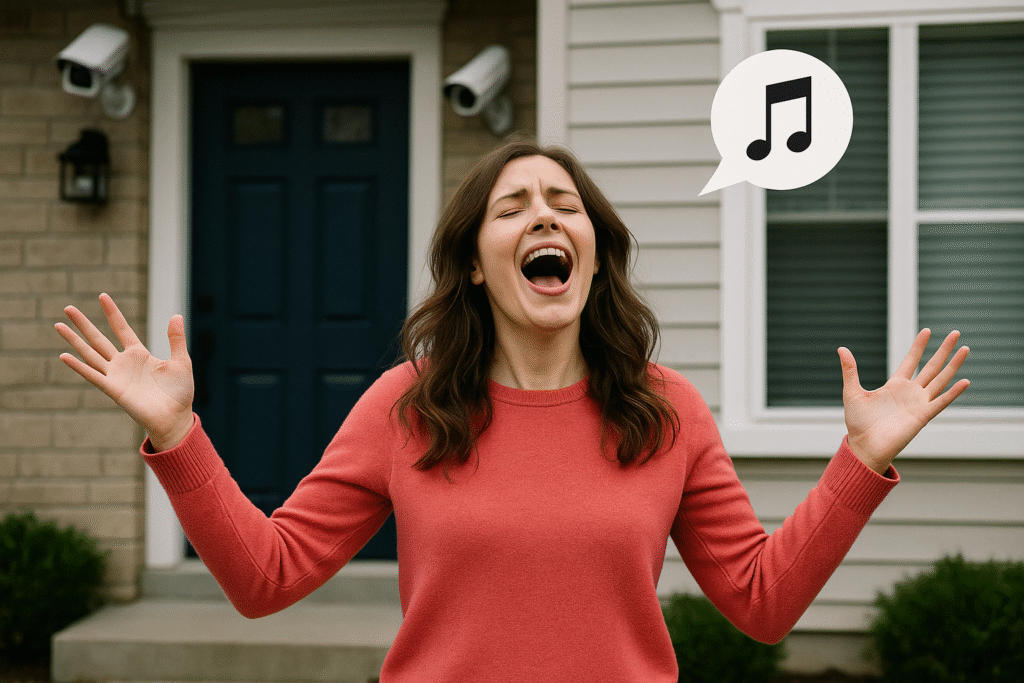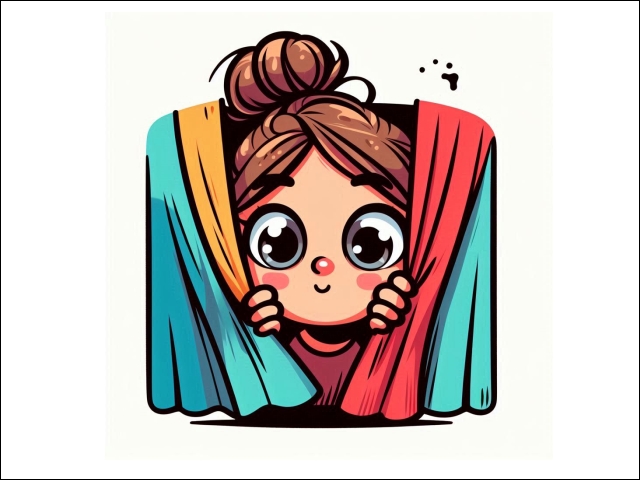

Does anyone else feel so overwhelmed by how they’ve come across in a conversation that it triggers a spiral of compulsive behaviours? For me, it often does. The stress of social interactions can cause OCD behaviours, even years (and decades) after they have happened.
I know these rituals – whether they involve repeating words under my breath or tapping surfaces until it “feels right” – are my mind’s way of regaining control. But in practice, it often feels like I’m caught in a loop. A loop that’s been triggered not by an immediate danger, but by the lasting shame of how I believe I’ve presented myself to others.
OCD Behaviours As A Response To Emotional Distress
My compulsions often take on tactile forms. Straight after a brief casual chat where I didn’t make someone laugh hysterically or make them want to be my best friend, I’ll often start muttering to myself and/or shouting random things out. I might even burst into song! Luckily, if I’m in public, I can control (most of the time) myself to muttering under my breath.
I remember reading that some soldiers with PTSD will shout or sing out loud in an attempt to dispel intrusive, violent imagery.
This also happens when I recall disturbing images from my time doing animal rights activism. Those memories stay with me, and occasionally, without even realising it, I’ll let out an expletive or burst into a loud phrase, only to later notice my patio doors were open. I often wonder what the neighbours must think, but they’re probably so high on dope, they don’t notice (I live in a perfectly respectable area, by the way – very flowers-in-hanging-baskets and people-who-jog-for-fun – but next door lives a pair of wayward sons who seem to think gifting me their old furniture is a form of hush money. So far, it’s working. But I’m not above turning on them).
A Personal Inventory Of Rituals
If shame is the spark, then these compulsions are the wildfire. When a social interaction goes “wrong” (read: not perfect, not charming, not unforgettable), it doesn’t just end when the conversation does. It lingers, and it often morphs into ritual.
Here’s a not-so-glamorous list of what that can look like for me on any given day:
🗣️ Muttering things under my breath – Sometimes it’s a replay of what I should have said, or a self directed scolding. Sometimes it’s nonsense words. Either way, it feels like a pressure valve releasing.
😳 Shouting random things out – It’s not Tourette’s. It’s more like a shame burst. A way to interrupt the echo chamber in my head. It happens when I’m alone – or when I think I’m alone (sorry, neighbours – or maybe not).
🎤 Bursting into song – Not for fun. For regulation. Like hitting “shuffle” on my brain to drown out the memory loop. Bonus points if the lyrics have nothing to do with anything.
⏹️ Full stop obsession – I have to leave a period at the end of every sentence. If I don’t, it feels… unfinished. Vulnerable. Like the thought might unravel. I’ve even sent follow up texts that are just a single dot.
🖐️ Touching things with both hands. It needs to feel symmetrical. Balanced. If one hand touches something, the other needs to mirror it with the same pressure, no more, no less. It’s like trying to convince my nervous system that the world hasn’t tilted.
🔌 Checking plugs are pulled out – Even when I know they are. Even when I’ve just checked them. There’s this stubborn whisper in my brain that says, “But what if?” And then I check again. Just to be sure. Again.
⌫ Deleting whole sentences because of a typo. One wrong letter and it’s like the entire sentence is contaminated. I can’t just backspace a single character. I have to start over. Clean slate. Control regained.
These behaviors don’t feel like choices. They feel like rituals my brain insists on performing to stave off disaster – imagined, emotional, or otherwise. They offer a fleeting sense of order in the chaos of shame, anxiety, and old emotional wounds.
The Longevity Of Compulsions
These behaviours aren’t limited to recent memories. I’ve had intrusive thoughts related to things that happened decades ago. Sometimes, when I’m caught in that spiral, I feel compelled to repeat an action a certain number of times. There’s a belief – irrational, but deeply embedded – that if I don’t, something bad will happen to my animals in the afterlife. That’s the insidious nature of OCD behaviours: they link the abstract to the concrete in ways that feel unshakably real.
Even in calm moments, like when I’m talking to my two rescue cats, I catch myself saying things twice. The ritual doesn’t always emerge from emotional distress – it’s simply a pattern that insists on being followed.
Shame As The Root
Still, most of my compulsions seem to be driven by one core emotion: shame. Social shame, in particular. The way I replay interactions, obsess over facial expressions, tone of voice, or perceived awkwardness – it all feeds into this mental cycle. My mind wants to purge the memory, to silence the echo, and OCD behaviours give me a temporary, ritualised way to try.
Sometimes it’s shouting, sometimes it’s barely a whisper. Just a quiet murmur on repeat, barely audible but relentless.
Trauma, OCD, And The Body’s Response
It’s estimated that between 4% and 22% of people with PTSD also meet the criteria for OCD. That overlap makes me wonder whether some of our compulsive behaviours are rooted in emotional trauma – whether from childhood, or from the chronic stress of feeling like we’re constantly failing in our interactions with others.
OCD behaviours, in this light, aren’t just quirks or coping mechanisms. They’re trauma responses. They’re the body and mind’s attempt to create order, safety, and relief in a world that feels emotionally unsafe.

Understanding Hypervigilance Through The Lens Of AvPD
Years ago, during therapy for what I then understood only as social anxiety, I mentioned that certain sounds made me a bit of a nervous wreck. That’s when my therapist told me about hypervigilance. I’d never heard of it then.
For me, hypervigilance manifests in small but constant ways. When I hear raised voices outside my home, my immediate reaction isn’t one of curiosity or neutrality. It’s alarm. My mind doesn’t interpret it as friendly neighbors having a chat – it registers as a potential threat. My internal alarm system flips on, scanning for meaning, danger, rejection. It’s as if I’ve been wired to assume the worst. This heightened state of awareness isn’t just about sound – it’s layered with interpretation.
When people are loud near my home, it doesn’t just bother me because it’s disruptive. I perceive it as a signal that they don’t care. That their volume is a declaration: “We don’t need to respect your space.”
It may sound like a stretch, but for someone with avoidant personality disorder, this kind of assumption is familiar. At the core of AvPD lies a deep fear of being disliked or rejected, and hypervigilance amplifies every possible cue that could confirm those fears. It’s strange, really – how I can struggle to focus during a one-on-one conversation because I’m stuck in my head, obsessively analysing how I’m being perceived. And yet, I can clearly hear conversations taking place three houses down. My brain filters out the person in front of me and tunes in to background noise that feels, inexplicably, more threatening. That’s hypervigilance in action: the mind on high alert, scanning the environment for potential emotional danger, even at the cost of being present.
Hypervigilance is often discussed in relation to trauma related conditions like post-traumatic stress disorder, but it also shows up in anxiety disorders, personality disorders, and states of chronic stress. It’s the nervous system’s way of preparing for danger – constantly watching, listening, bracing. For some, it’s rooted in past experiences of harm. For others, like those with AvPD, it can be tied to an ongoing fear of being judged, rejected, or emotionally unsafe in social situations.
Though research on the connection between AvPD and hypervigilance is limited, the lived experience speaks volumes. Many with avoidant traits describe the same exhausting mental alertness: reading between the lines of every social cue, preparing for criticism before it even arrives, interpreting neutral behaviours as potentially hostile.
Hypervigilance may have evolved as a survival mechanism, but in modern social life, it can become an invisible barrier to connection. It places the nervous system on constant standby, leaving little room for trust, comfort, or spontaneity. For me, recognizing it for what it is – an overactive sensitivity to threat – has been the first step toward managing it. Hypervigilance isn’t a flaw. It’s a symptom. A signal from the body and mind that something, somewhere, once felt unsafe – and that the alarm never quite got turned off.
 Further Reading And Resources:
Further Reading And Resources:
International OCD Foundation – What Is OCD?
A thorough overview of OCD, including symptoms, treatment, and lived experiences. Great place to start.
Cleveland Clinic – What Is Hypervigilance?
Explains hypervigilance in plain terms—its causes, symptoms, and coping strategies.